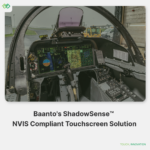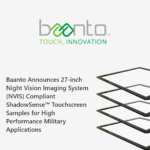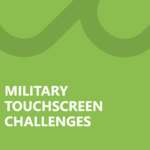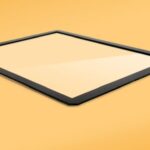Military & Avionics Touchscreen Display Solutions
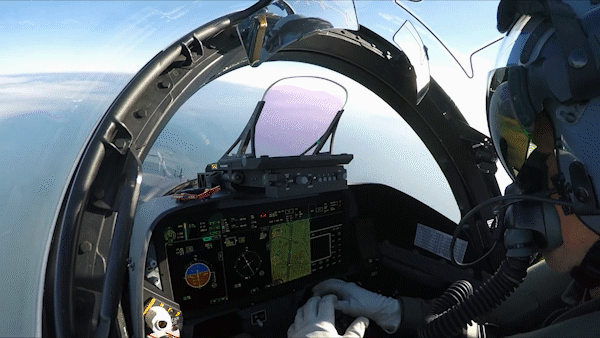
ShadowSense™ based solutions have achieved the highest level of certification and compliance, required for mission critical applications such as cockpit avionics systems.
Ruggedized Touchscreen Advantages
ShadowSense™ offers several unique advantages for ruggedized military and avionics touchscreens:
- Reduction in human error due to increased situational awareness
- Reduction in mechanical failures
- Reduction in operating cost and weight
- Provides the highest overall optical transmission/clarity and lowers the backlight power requirements over competing products.
- Allows for coatings on the glass to lower optical reflectance and provides a superior high ambient contrast ratio.
- It is easy to package mechanically.
- Uses standard COTS (Commercial Off the Shelf) hardware to ensure a very low-cost design.
- Long-term reliability ensures calibration or configuration over the life of the product is not required.
- Maintains performance during operation in temperature extremes.
- High efficiency, long-life LEDs guarantee long-term performance.
- Maintains performance operating in high dust, high humidity environments.
- Invariant to manufacturing and tolerance related issues, reducing the cost of assembly and long-term support.
- Able to withstand high ambient sunlight at high altitudes without degradation of performance.
- Support for Night Vision Imaging Systems (NVIS) required for advanced military applications.
ShadowSense Benefits for Ruggedized Touchscreen Solutions
In addition to military specifications and certifications, commercial and civil aviation certification requirements demand the highest levels of reliability, performance, and quality. Ruggedized touchscreen displays on flight decks must work without error and must meet stringent testing for quality control, vibration control, electrical and mechanical proficiency as well as ease of optical clarity and readability. Over and above those required for civil aviation, military avionics are subject to additional levels of quality and reliability for mission critical operations. In both environments, touchscreens for aviation and military must perform flawlessly from takeoff to landing, in extreme turbulence, or during the vibration of weapons fire.
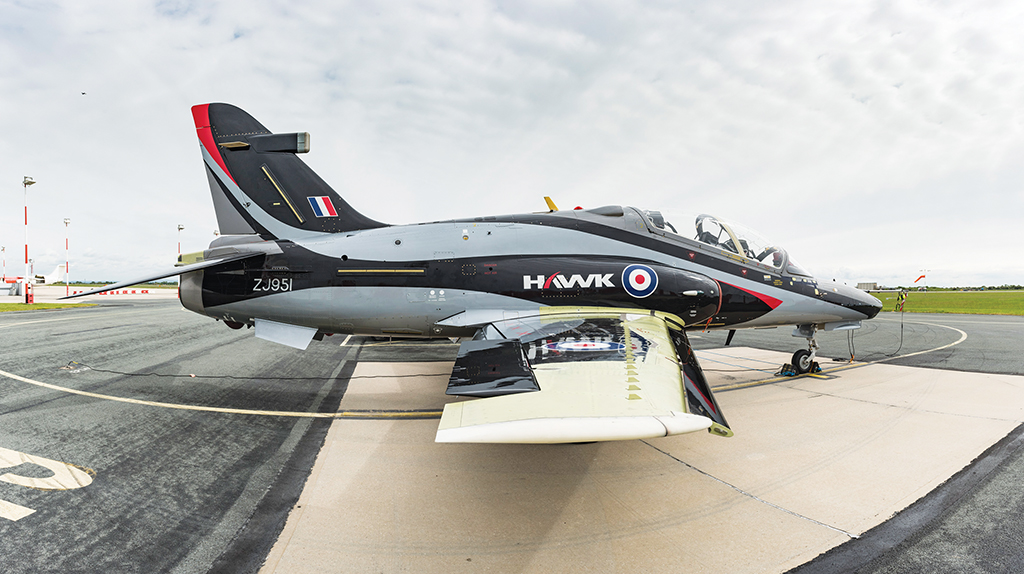
Avionics & Military Custom Touchscreen Solution Certifications
| MIL-STD-901E | Shock & Vibe |
| MIL-STD-167-1 | Shipboard vibration |
| MIL-STD-461-F | EMI, including RS-103/105 susceptibility to 200V/m EM fields |
| MIL-STD-1399 | Power testing |
| MIL-STD-810G | Temperature cycling and shock |
| Humidity and salt fog | |
| IP 64/65 | Ability to operate in environments with water, dust and humidity |
| Airborne noise | |
| MIL-STD-3001 | Compliant with NVIS systems |
| DO-178C | Software compliance with military standards for safety and operations |
| FAA-A | Flight avionics certification |
| RTCA/DO-160 | Environmental conditions and test procedures for airborne equipment |
| AS5452 Rev A | SAE aerospace standard, Night Vision Goggles (NVG) compatible lightning for civil aircraft |
| DO-178C | Software considerations in airborne systems and equipment certification |
FAQ
Most frequent questions and answers on military & avionics touchscreens
Various types of touchscreens can be used for military purposes, from IR, to resistive, to capacitive (Surface capacitive or projected capacitive – S-cap or P-cap) and in some applications, ShadowSense. Any of the available technologies can be used in almost any situation. From our perspective, ShadowSense offers many advantages!
Various types of touchscreens are used for military purposes, from IR, to resistive, to capacitive (Surface capacitive or projected capacitive – S-cap or P-cap) and in some applications, ShadowSense.
